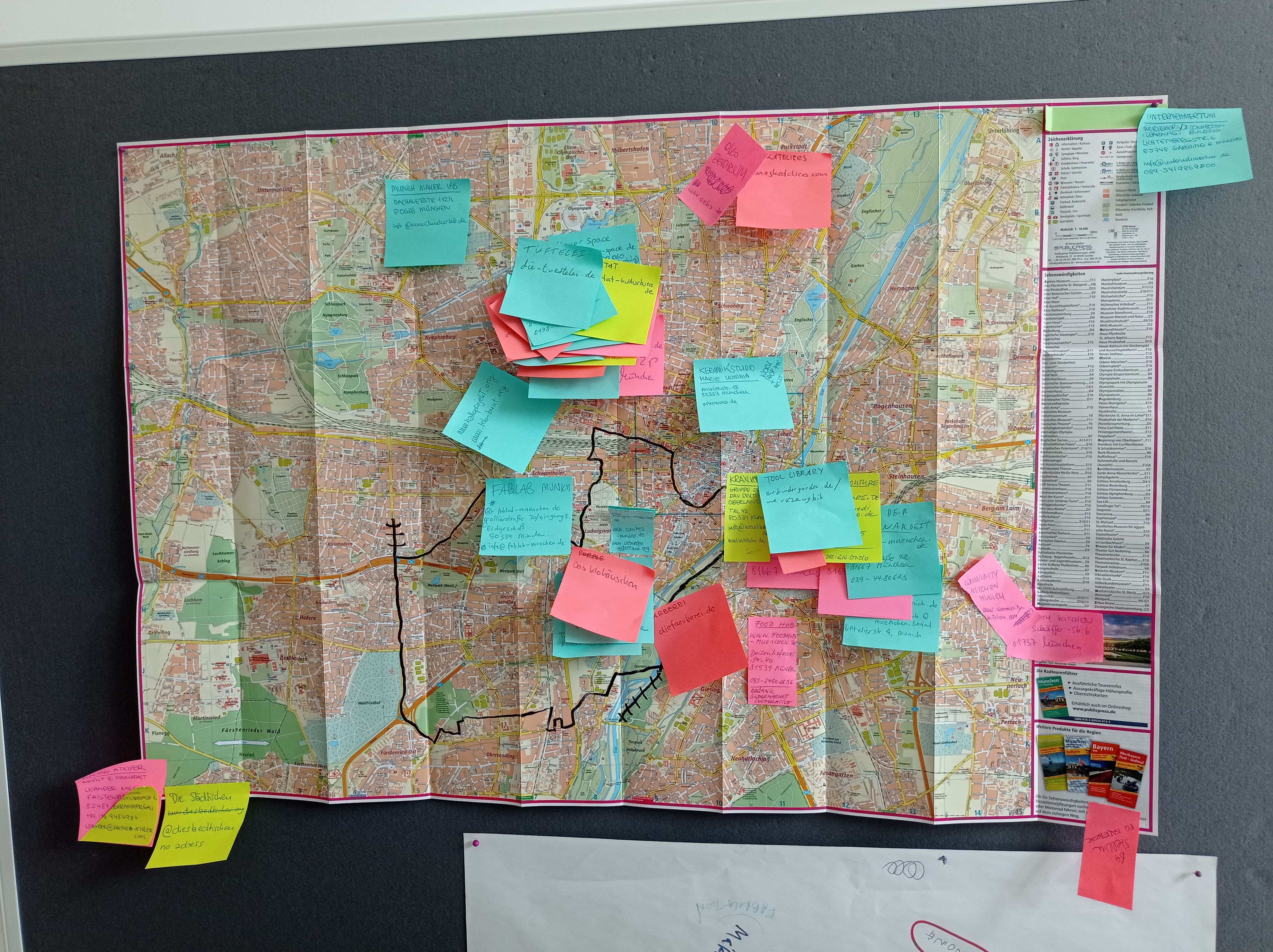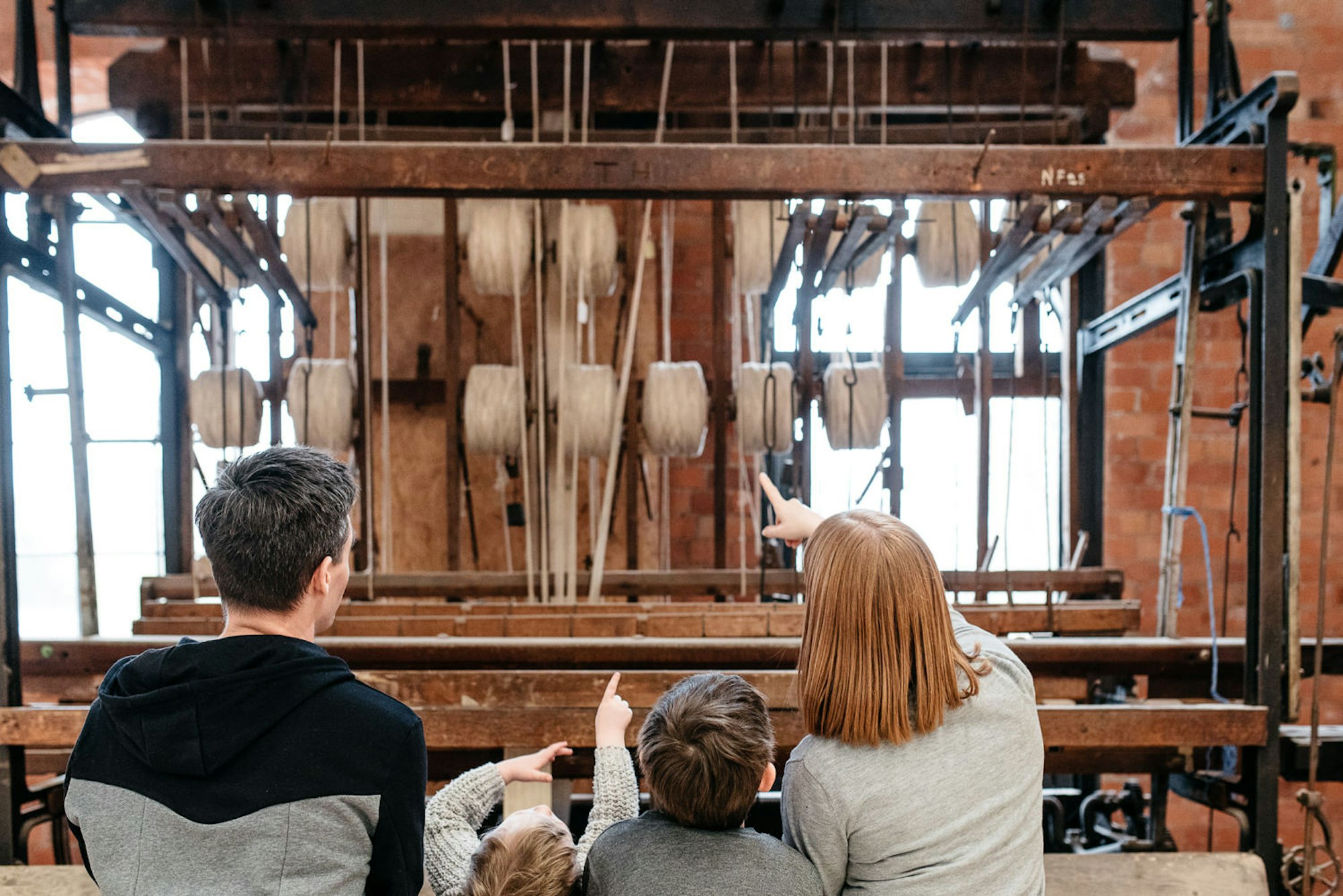Factory Tour at Varma, Reykjavik

Knitwear designer Hilary Grant has recently returned from exhibiting at Iceland's annual Design March festival in Reykjavik as part of a group cultural exchange project called Shift. A number of Highlands and Islands-based designers were paired up with Icelandic partners with the aim to establish a collaborative relationship – the result of which will be exhibited at next years’ 2018 Design March Festival.
As part of the visit, the group visited Reykjavik knitwear manufacturer Varma for a factory tour and to find out more about Icelandic knitwear.
We speak to Hilary to find out what the group learned about knitwear manufacturing and design in Iceland.
Our design partners Ragna and Guðrún from knitwear brand Doppelgänger took us to visit Varma – a knitwear factory based in Reykjavik. Varma is one of just two knitwear factories in Iceland and the only factory who will with work with other brands.
Birgg, the factory manager shows us around the machine room, where we see a lot of familiar pieces of kit. Stoll industrial knitting machines, hand-operated Dubied machines and lots of yarn. We also see some really old lace knitting machines, the patterns of which are read not digitally, or even on punchcards, but on metal plates. These machines are still in operation though they cannot have new plates made.

The lace shawls are knitted as a single pieces, each lace stitch being transferred individually by a mechanical process.
After knitting, the pieces are cast off, ends are sewn in and every piece is quality checked over a light box. The edges are finished with a hand-crocheted lace trim before pressing (unlike Shetland lace where the scalloped trim is further shaped by stretching it over a frame).
Varma also produce their own knitwear collections, which are sold throughout main tourist outlets in Iceland. They use Icelandic wool, called Lopi, in a lot of their knitwear. It is a course yet airy fibre. Sheep in Iceland have to put up with the hard weather conditions, constant wind, rain, snow and hail so their fibres have evolved to protect them from the elements.
For the many of the garments within Varma's range, Lopi is blended with either lambswool or angora to achieve a softer finish and therefore a wider commercial appeal. A lot of people are still very wary of angora, as it is unsure how or even if the conditions of the Angora rabbits have improved – so we were quite surprised to see it in use.
One way of softening the Lopi fibres is to brush the surface. The brushing machine uses 'teasels' – which are the pods of a dried plant. These are sourced from Spain and their use is highly common in woven cashmere manufacturing to 'raise the nap' of the woven surface, creating an even softer and lustrous finish.
In Iceland they use the brushing process on very open-knit garments, hats and sweaters. The brushing consolidates the fibres and creates an extremely lightweight and open knitted fabric, which almost appears to be felted but it is airy and spongy. On Lopi yarn, it makes for a bulky yet extremely lightweight and warm garment – it also reduces the weight of yarn needed, which also lowers the cost in raw materials.
We saw some of the amazing Vik Prjonsdottir stoles in production as well. They are knitted in Lopi wool – which is spun and dyed in Iceland. I have long been a fan of their work, and was thrilled to see the pieces as they were made. The video shows a the edges being finished on a blanket-stitch machine.
The Komet (now Bently-Komet) sock machine. These would have been originally been hand-operated, by turning the crank.
You can see they have been adapted with a belt connecting the gears and they are now machine powered.
Modern sock machines, which produce the majority of Varma's socks.
The socks are knitted almost seamlessly, with the toe and heel fully-fashioned. The toe is joined on to the main sock using an overlocker-type device which has specifically been designed for use on socks. The socks are then washed and steamed in shape, ready for pressing and tagging before they are sent out to shops around Iceland.
Many of the local designers we spoke to told us that manufacturing in Iceland in general (not just knitwear), is really very limited. There just isn't the relative capacity for making or the technical facilities for it's growing design industry. Many of Iceland's designers go to Europe to make their products, knitwear in Lithuania, Germany and even as far as Hong Kong where knitwear designer Steinunn has her collections made.
Steinunn used to work as Design Director at Calvin Klein before moving back to her native Iceland. She currently manufacturers all of her knitwear in Hong Kong. Her knitwear is extremely sculptural and engineered, the nature of which requires fine gague knitting machines and specialist linking machinery to join the knitted pieces together, which isn't currently available in Iceland.
Iceland is very proud of it's ever growing design industry, and as a country it is known for it's self-determination and eagerness for progress. We could sense that many designers, not just in textiles, were frustrated at being held back by the lack of manufacturing available to them. The designers we spoke to wanted to be able to produce closer to home, not only because they wanted to have more of a connection with their product, but because when you are able to develop a relationship with a manufacturer you can understand the limitations of their processes, push against these and design around them. And that's often when exciting new techniques develop.
Steinuun also spoke of this. The highly experimental and creative nature of her designs allows her manufacturer in Hong Kong to develop highly specialised technical skills, allowing them to be at the forefront of innovative knitwear production. Both designer and manufacturer benefit when they are able to work more closely together.
As part of the SHIFT exchange we are hoping to introduce our design partners, Doppelgänger, to factories in Scotland so that they are able to develop their collections. The collaboration is an opened ended project but we hope we'll be able to learn from each other, develop new work together and we aim to show you the outcome this time next year at Design March 2018.
If you would like to learn more about design in Iceland, you can visit the Icelandic Design Centre, look up the paper 'Design as a Driver for Future' or subscribe to HA Magazine.
Thanks to Carole Sinclair, Emergents, Highlands and Islands Enterprise and Design March for facilitating this project.
You can find out more about Hilary Grant here.
Categories
Article
Related stories
Why Make Work Locally
Alan Moore and Ten30 Fashion
Tips for Manufacturing in Scotland
A Life in Lace
In the Belly of the Beast: my one year manufacturing for Coca Cola










